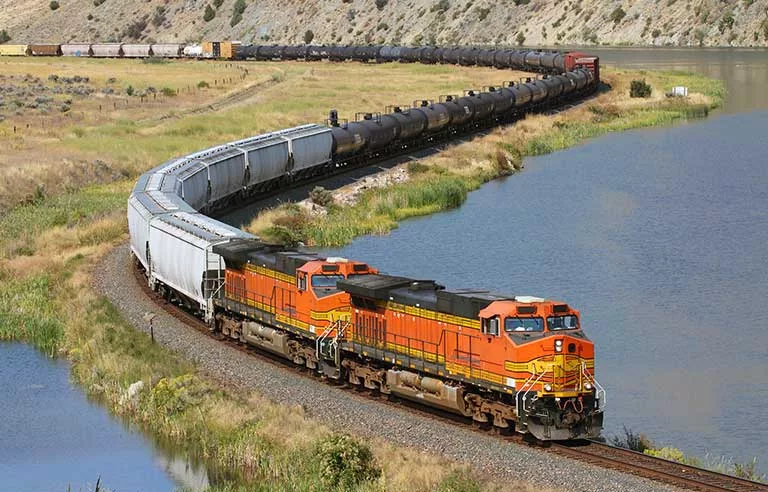- By TOP CHINA FREIGHT
- September 16, 2025
- Shipping
Table of Contents
Finding the right freight forwarder China to Mexico is crucial for businesses seeking cost-effective and timely shipping solutions. Freight charges, customs clearance, and transit reliability are common concerns. By understanding shipping options, logistics trends, and documentation requirements, businesses can streamline operations, reduce costs, and avoid unexpected delays. This guide covers all key aspects to help importers make informed decisions.

What Factors Affect Freight Forwarding Costs?
Freight costs depend on several variables. Cargo weight, volume, and type play a central role. Moreover, shipping method, seasonality, fuel surcharges, and port congestion influence final prices.
For example, importing electronics requires faster transport, often increasing costs. Conversely, bulk raw materials shipped via sea freight are more economical. Customs duties, taxes, and inland transportation in Mexico also impact total landed cost. Freight forwarders offer strategies to balance these factors, ensuring optimal pricing while maintaining shipment reliability.
How Do Shipping Methods Compare?
Different transport modes suit various business needs. Each option has its pros and cons regarding cost, speed, and convenience.
| Shipping Method | Average Cost | Transit Time | Pros | Cons |
|---|---|---|---|---|
| Sea Freight (FCL) | $1,800–$3,500 per 20ft | 25–35 days | Cost-effective for large shipments | Slower delivery |
| Sea Freight (LCL) | $70–$100 per CBM | 30–40 days | Flexible for smaller shipments | Longer handling |
| Air Freight | $6–$10 per kg | 5–10 days | Fast, reliable for urgent goods | Higher cost |
| Express Courier | $8–$12 per kg | 3–6 days | Door-to-door, easy customs | Expensive for large cargo |
| Rail Freight | $3,500–$5,500 per 40ft | 20–28 days | Balanced cost/time | Limited routes |
What Are Typical Sea Freight Costs?

Sea freight remains the most economical solution for bulk shipments. Full Container Load (FCL) and Less than Container Load (LCL) are common choices.
| Container Type | Average Cost | Capacity |
|---|---|---|
| 20ft FCL | $1,800–$3,500 | 25–28 CBM, up to 22 tons |
| 40ft FCL | $3,000–$5,500 | 55–58 CBM, up to 28 tons |
| 40ft HC | $3,200–$5,800 | Slightly larger than 40ft FCL |
| LCL | $70–$100 per CBM | Small shipments under 15 CBM |
Negotiating long-term FCL contracts with carriers ensures consistent rates and stable scheduling.
How Much Does Air Freight Cost to Mexico?

Air freight offers speed but is more expensive. It suits high-value or time-sensitive goods.
| Weight Bracket | Cost Range | Transit Time |
|---|---|---|
| 0–100 kg | $6–$10 per kg | 5–7 days |
| 100–500 kg | $5–$9 per kg | 6–8 days |
| 500+ kg | $4–$7 per kg | 7–10 days |
Air shipments reduce warehousing costs and improve cash flow by delivering inventory quickly.
Can Express Couriers Be Cost-Effective?

For small parcels, express services such as DHL, FedEx, and UPS provide fast and convenient delivery. They handle customs clearance, reducing administrative burdens for importers.
For example, sending 50 kg of high-tech products costs around $400–$450 via express courier. While expensive, this method is suitable for urgent deliveries or e-commerce orders needing quick turnaround.
What About Rail Freight?

Rail freight, mainly through the U.S. or Central America to Mexico, balances cost and transit time. It is faster than sea freight and more economical than air freight.
Limitations include limited routes and potential delays due to cross-border logistics. Rail is suitable for medium-volume shipments and inland Mexican destinations that are far from ports.
What Customs Documents Are Required?

Proper documentation ensures smooth clearance and avoids fines. Freight forwarders assist in preparing the following:
| Document | Purpose |
|---|---|
| Bill of Lading / Airway Bill | Confirms shipment details |
| Commercial Invoice | Declares cargo value |
| Packing List | Details shipment contents |
| Import Declaration | Required for customs |
| Certificate of Origin | Determines duty rates |
Why Do Freight Costs Fluctuate?
Freight rates change due to global supply chain trends, peak seasons, fuel prices, and port congestion. For instance, Chinese New Year and holiday seasons increase demand, pushing prices higher.
Forwarders can lock in rates through contracts or provide alternative routes to mitigate fluctuations. Businesses that plan shipments in advance and diversify carriers achieve more predictable costs.
Case Study: Cost Savings with a Freight Forwarder

A Mexican electronics retailer struggled with high shipping expenses from Shenzhen. By partnering with a freight forwarder, the company consolidated LCL shipments into FCL containers and scheduled regular sea shipments.
Outcome:
Shipping costs dropped by 30%, transit reliability improved, and customs clearance was faster. This hybrid strategy allowed the retailer to maintain inventory without overpaying for air shipments.
How to Optimize Freight Costs from China to Mexico?
Practical strategies include:
- Consolidating shipments to fill containers.
- Booking early to avoid peak season surcharges.
- Negotiating long-term contracts with carriers.
- Mixing air and sea freight for flexibility.
- Using bonded warehouses to defer duties.
These methods reduce overall costs while maintaining delivery reliability.
Conclusion
Choosing a reliable freight forwarder China to Mexico ensures smooth, cost-effective imports. Sea freight is best for bulk shipments, air freight for urgent goods, and express couriers for small parcels. Rail provides a balanced option for medium-volume inland deliveries. By consolidating shipments, planning ahead, and leveraging forwarder expertise, businesses reduce costs, improve delivery schedules, and mitigate risks.
Need a Shipping Quote?
If you want expert guidance and peace of mind, our team is ready to assist.
TJ China Freight offers tailored solutions to help businesses of all sizes ship more reliably from China.

FAQ
Q1:What is the cheapest shipping method from China to Mexico?
Sea freight FCL is the most economical, especially for bulk shipments, saving up to 30% compared to air freight.
Q2:How long does sea freight take from China to Mexico?
Transit usually takes 25–35 days, depending on ports and consolidation methods used.
Q3:Can small parcels be shipped economically?
Yes, LCL or express couriers handle small shipments efficiently, suitable for orders under 15 CBM.
Q4:Do customs fees affect total freight costs?
Yes, duties, VAT, and clearance fees add to landed costs. Accurate documentation reduces delays and extra charges.
Q5:Is air freight suitable for large shipments?
Air freight is best for urgent or high-value items; large volumes are more cost-effective via sea freight.
